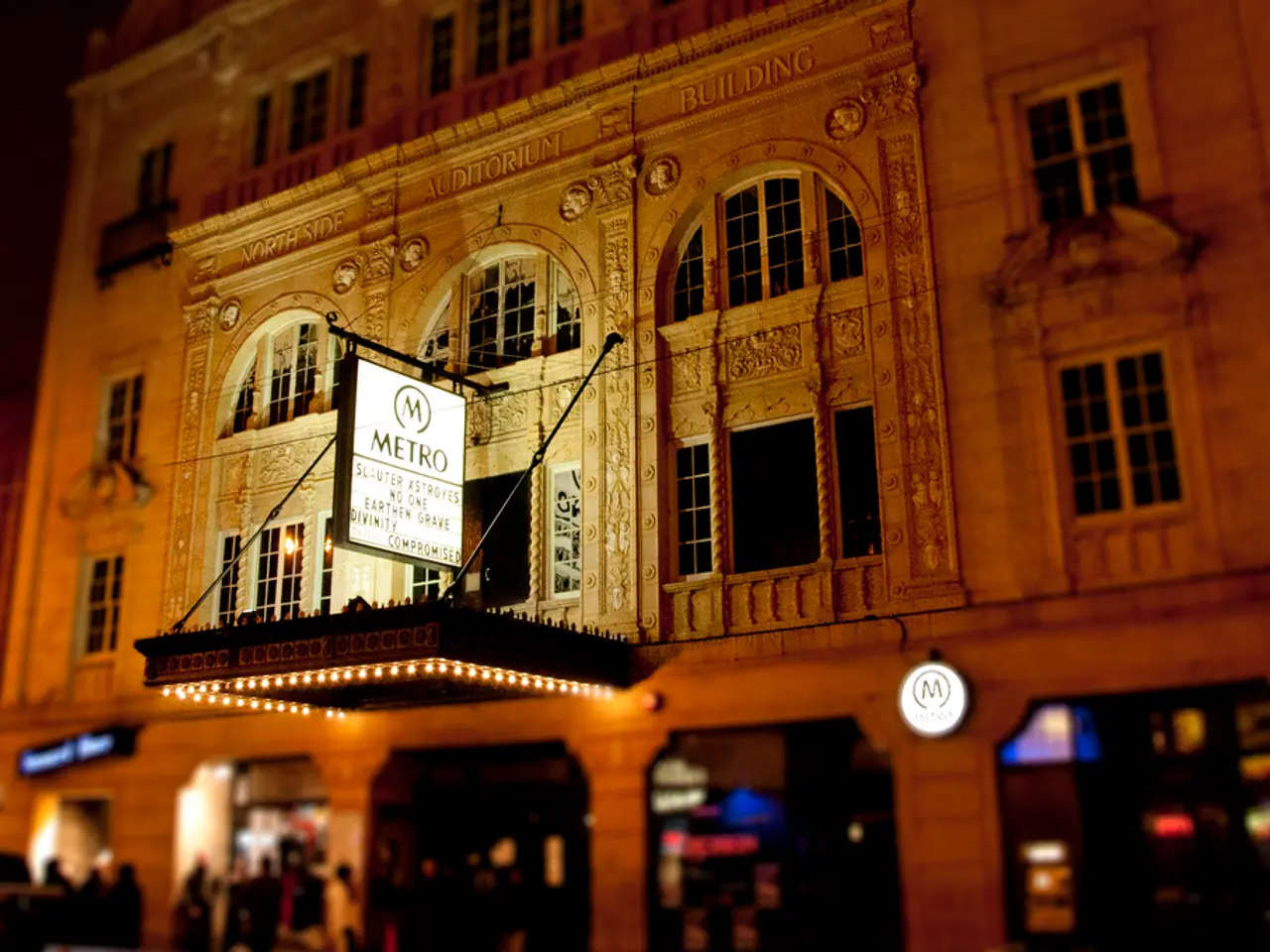Strategies for Sincerely and Productively Crafting Solutions for Clients Varying in Financial Means
April 7, 2025: Design Interiors Mindset
The creation of striking interior spaces no longer hinges solely on lavish funds. By establishing value-based pricing, mastering tiered sourcing tactics, and effectively communicating spatial priorities, designers can craft exceptional interiors suitable for various budgets. Emphasize essential design elements, employ smart sourcing strategies instead of cutting corners, and build client relationships centered on transformative spaces – beyond mere price tags. With a fixed budget, the potential for stunning, functional environments remains unbounded.
Reflection Questions
During your last budget-conscious project, did you clearly identify design elements as priorities and consider less expensive, yet effective, alternatives?
How do you currently convey the interplay between square footage, timeline, and budget to clients? Could your approach more effectively align expectations with financial realities?
Could a more strategic sourcing approach enhance the quality of projects while catering to different budgets within your design process?
Journal Prompt
Recall a budget-constrained interior project that left you feeling frustrated. How did you adapt your process? Which high-impact elements did you preserve, and which did you modify? Contemplate how you might restructure a similar project to deliver increased spatial value while honoring budgetary constraints. What would your priorities be, and what alternatives would you explore?
The spectrum of client investment varies enormously, ranging from first-time homeowners on a modest budget to affluent homeowners with funds to match their grand visions. Yet, the expectation remains consistent: clients expect designers to provide beautiful, functional spaces that enhance their daily lives.
Navigating this industry presents both practical and philosophical challenges, especially when working with clients across diverse budget tiers. How can design integrity and transformative spaces be achieved regardless of the price tag? How can quality not be compromised in the face of budget constraints, and how can a sustainable design practice serve diverse clients without affecting your well-being or standards?
While a larger budget may seem inherently associated with better spaces, the reality is more nuanced. Exceptional interior design is about strategic choices, clear priorities, and quality materials as much as custom furnishings and high-end materials. With the right approach, designers can craft impactful spaces across the budget spectrum while preserving their creative standards and business health. Let's delve deeper.
Designing for Clients with Different Budgets without Compromising Quality
Define Your Value Beyond Products and Procurement
Recognize the worth of your services before setting prices. Remember that a home decor store sells products; you sell the results, such as improved functionality, spaces that reflect identity, better workflow, maximized square footage, family time, etc. Positioning your work in terms of the transformation it creates rather than the line items it includes can shift budget discussions.
Begin by compiling before-and-after case studies that demonstrate your impact in previous clients' homes. How did your kitchen redesign improve family time? How did your space planning solution resolve workflow issues? How did your bedroom design enhance sleep quality? Ensure you include testimonials in your online portfolio to help prospective clients understand how the space was optimized, not just the photos.
For high-budget clients, this approach validates their significant investment in custom solutions and premium materials. For clients with tighter constraints, it helps them understand exactly what expertise they're getting and why your design services offer significant value.
Keep in mind that the perception of value is highly subjective. Adjust your conversation to match each client's life stage and priorities, while always articulating the tangible ways your design improves daily living or the guest experience.
Learn the Art of Tiered Sourcing and Strategic Splurging
The secret to catering to various budgets is not cutting corners whenever possible but knowing exactly where to invest and where to find creative alternatives. Successful designers develop sophisticated sourcing strategies that can adapt based on available resources while maintaining design integrity.
One way to accomplish this is to categorize each project as having investment pieces and flex pieces. Investment pieces – such as quality sofas, statement lighting, or unique fabrics – remain essential regardless of overall budget. Flex pieces, like lower-priced decorative elements or certain finish selections, can be adapted to fit different budgets without jeopardizing the overall design vision.
Develop project planning guides that outline good-better-best options for common categories. This transparency helps clients understand trade-offs and make informed decisions about where their investment will have the greatest impact. Moreover, it shifts the conversation from "cheap versus expensive" to "strategic allocation of resources." You both will likely prefer this mindset shift.
Forge relationships with vendors across the full spectrum, from custom workrooms to mid-range retailers to budget-friendly sources. Knowing when and how to leverage each vendor effectively within a single space allows you to approach budget parameters with confidence without sacrificing cohesive design vision.
Fuel your creative fire & be a part of a supportive community that values how you love to live.
Subscribe to our newsletter
Communicate Spatial Priorities and Budget Realities with Clarity
Whilst budget discussions may feel uncomfortable, they are necessary for establishing expectations and building trust. The strongest client relationships are forged on transparency about what is feasible within given constraints. Avoid dancing around the details; be direct.
For High-Budget Clients...Resist the temptation to specify luxury materials or custom elements just because the resources are available. Instead, focus on selections that genuinely enhance the space’s function, durability, or emotional impact. Explain how certain investments – perhaps in architectural changes, quality construction, or statement pieces – will meaningfully elevate their daily experience. Don't upsell them at every turn; this could harm your reputation and offend your client. Upsell to benefit – not to blow up the budget.
For Clients With Tighter Resources...Avoid making promises that budget realities don’t support. Instead, offer creative alternatives that deliver core design value while respecting limitations. This might mean breaking the project into stages, focusing initially on layout and space planning, or creating a design roadmap for gradual implementation.
Frame budget conversations around the project triangle of scope, timeline, and cost. Explain that these three factors exist in balance. Changing one affects the others. If the budget is fixed, then either the project scope must shrink or the timeline might be extended to allow for gradual implementation.
Most importantly, position yourself as a problem-solver. When a client shares budget constraints, respond with, "Here's how we can maximize impact within that investment," rather than simply scaling back your vision.
Establish Your Non-Negotiables Across All Budget Levels
While flexibility is important, certain aspects of your design process and quality standards should remain constant, regardless of the project budget. Some compromises simply should never be made. Identifying these non-negotiables and sharing them with your team preserves design integrity and ensures that every client receives spaces that work for them while respecting your professional standards.
Your non-negotiables might include the following. Edit as needed for your own practice, of course.
- A thorough initial assessment of the space and client needs
- Proper space planning and circulation analysis
- Scale-appropriate furniture selections, even for lower-priced options
- A cohesive color strategy that creates visual harmony in one space or across spaces
- Lighting plans that address ambient, task, and other needs
- Attention to proportion, balance, and visual weight
Document these standards and share them early in client conversations. Explain them in words that clients will easily understand. Explain that while you will be able to adapt materials and specific products to meet budget constraints, these fundamentals are set. They ensure each space functions beautifully and feels cohesive.
When clients understand which elements are flexible and which aren't, they're better equipped to make decisions that support project success rather than undermining it through constant changes or unrealistic expectations. Remember that your design integrity isn't determined by project budget but by your commitment to certain values.
Build Long-Term Client Relationships Through Phased Implementation
Your client's budget may be set right now, but it could evolve in the future. By structuring initial engagements to demonstrate clear value, you create opportunities for expanded work as clients' resources grow or as they recognize the return on their design investment.
Consider creating comprehensive proposals that outline both immediate changes and future improvements for clients with modest initial budgets. This approach might include a phased strategy that addresses essential needs first (such as space planning and key furniture pieces) while establishing a foundation for subsequent projects. Not only does this make larger projects more accessible, but it also positions you as an adviser who is invested in the client's long-term happiness.
For high-budget clients, focus on creating spaces with lasting value rather than trend-dependent designs. Thoughtful architectural improvements, quality construction, and classic anchor pieces create enduring foundations that typically lead to ongoing client relationships as needs evolve. Documentation that clients can hold onto and refer back to – such as floor plans, furniture layouts, or design briefs – is key here.
The primary objective here is certainly not to upsell clients beyond their means. Instead, you are creating a relationship that will naturally evolve as their needs and resources grow. When clients see interior design as an ongoing investment in their quality of life rather than a one-time expense, budget conversations shift from cost-cutting to value optimization. More often than not, this is a more productive framework for design collaboration. After all, a long-term client with a medium-sized budget at each project can be equally as, if not more, meaningful than a single high-value project.
Final Thoughts
Budget limitations will always shape interior design projects; however, they need not define the quality or impact. By emphasizing transformation over transactions, developing tiered sourcing strategies, communicating transparently, upholding your firm's values, and fostering evolving client relationships, designers can create meaningful spaces across a wide spectrum of client resources.
For more articles on navigating the business side of interior design while preserving creative excellence, subscribe to our newsletter or join our DesignDash Community. We share practical insights for interior designers who want to build sustainable practices without compromising their spatial vision or design integrity.
Join us for the Focus & Flex Challenge
Sign up | Share
- Designers can create exceptional interiors suitable for various budgets by establishing value-based pricing, mastering tiered sourcing tactics, and building client relationships centered on transformative spaces.
- Strategic choices, clear priorities, and quality materials are just as important as custom furnishings and high-end materials in exceptional interior design.
- By identifying their worth and communicating the tangible ways their designs improve daily living, designers can shift budget discussions and articulate the value of their design services.
- Recognizing non-negotiables, such as a thorough initial assessment and proper space planning, ensures that every client receives spaces that work for them while respecting the designer's professional standards.
- Forging long-term client relationships through phased implementation, even with modest initial budgets, creates opportunities for expanded work as clients' resources grow and positions designers as advisers invested in their clients' long-term happiness.
- Subscribing to a newsletter or joining a community can provide practical insights for interior designers looking to build sustainable practices that preserve their spatial vision and design integrity.




